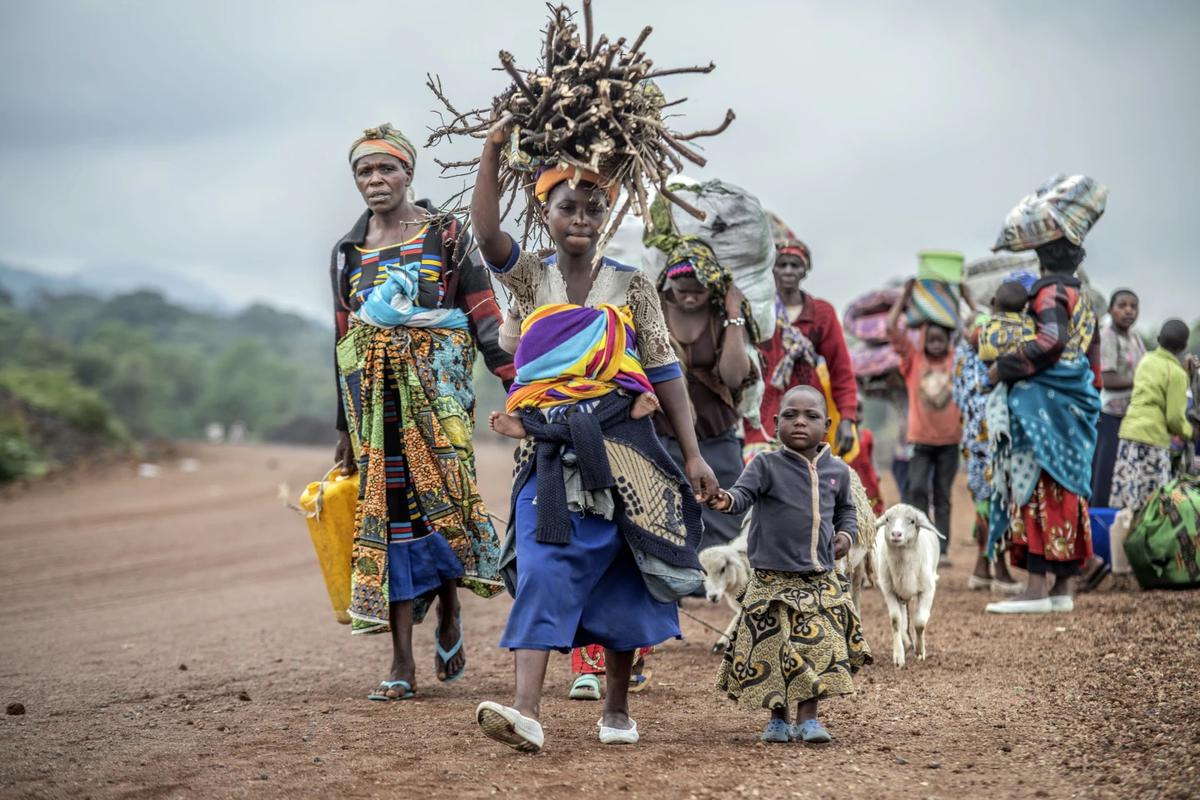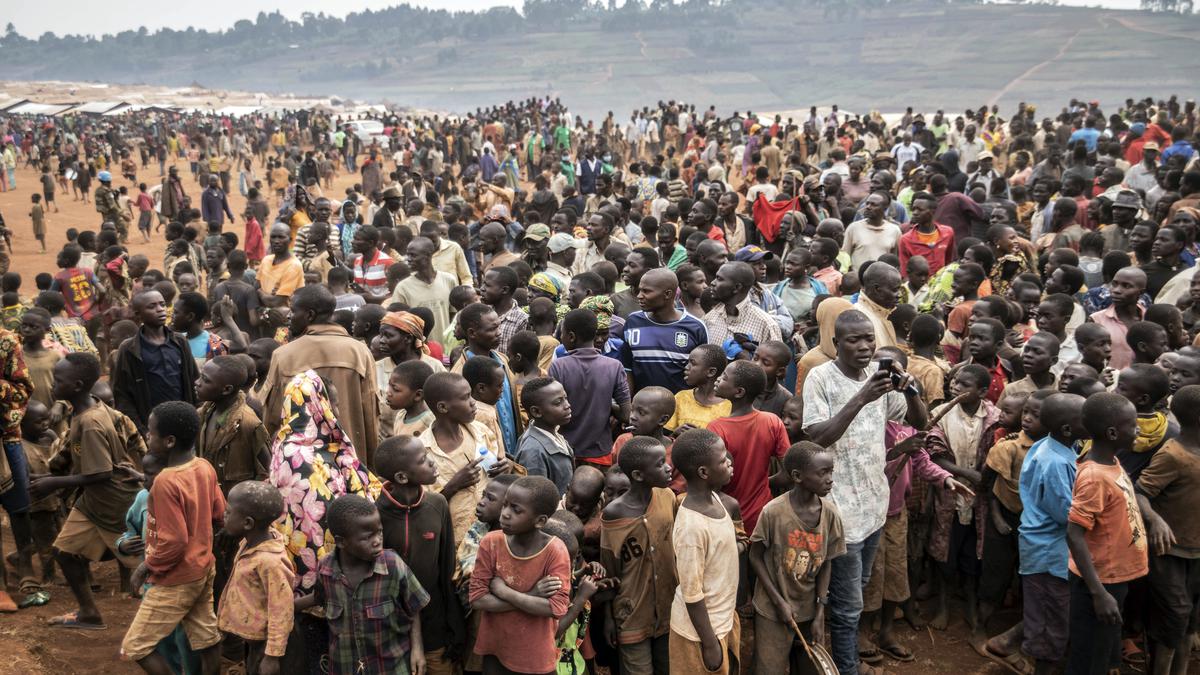The story so far: Renewed clashes in the eastern Democratic Republic of Congo (DRC) have triggered global alarm and exacerbated the already dire humanitarian crisis in the region.
Over the past few weeks, many have died and hundreds of thousands displaced after the fighting between the Congolese army and Rwandan-backed M23 group escalated around the town of Sake near Goma — the capital city of the mineral-rich North Kivu province. On March 6, rebels reportedly seized the town of Nyanzale near Goma, following attacks that killed at least 10 and displaced many.
The growing tensions between Congo and Rwanda, which has been accused of supporting the rebels, have not only increased the risk of an all-out conflict but also pose a threat to food security for millions. The United States has appealed to both countries to “step back from the brink of war” while asking Rwanda to immediately withdraw its defence personnel from the DRC and remove its surface-to-air missile systems. The United Nations and several Western countries have also denounced the attacks and called on the M23 rebels to cease their offensive.
Notably, the spike in hostilities in a decades-long war comes as the United Nations begins the gradual withdrawal of its peacekeepers from the eastern South Kivu province as per a predetermined disengagement plan, and after recent devastating floods left more than two million people in need of humanitarian aid.
Also Read | Rwanda Army using surface-to-air missiles in east DR Congo, says UN
What is the conflict?

An unending cycle of violence has engulfed the eastern region of the central African country for decades, with the conflict originating in two civil wars in the 1990s. In 1994, an estimated eight lakh minority ethnic Tutsis and Hutu moderates were killed by extremist Hutus in 100 days, in what is now known as the Rwandan genocide. At the time, Hutus made up roughly 85% of Rwanda’s population.
In the subsequent days, around two million people crossed the Congolese border (then known as Zaire) to settle in refugee camps in the eastern provinces of North Kivu and South Kivu as a Tutsi government gained control of Rwanda. Former Rwandan government soldiers who had participated in the genocide used these camps to re-arm themselves to take back power. A small subset of these refugees included Hutu extremists who organised militias within Congo.
Tutsi militias also banded together to fight extremist Hutus as tensions heightened between local Congolese and Rwandan emigrants. Over half of Rwanda’s population of seven million was directly affected by the crisis. The ethnic tensions, worsening living and economic conditions, and health crisis in camps further set the stage for the First Congo War between the Zairean soldiers on one hand and the Tutsi militia and the Alliance of Democratic Forces for the Liberation of Congo (AFDL) on the other, with the backing of Rwanda and Uganda which wanted to root out the remaining perpetrators of the genocide. In 1997, the AFDL captured the capital Kinshasa and Zaire was renamed as the Democratic Republic of the Congo.

File photo: Residents flee fighting between M23 rebels and Congolese forces near Kibumba, some 20 kms North of Goma, Democratic Republic of Congo, in October 2022.
Another deadly war followed in 1998 after the new regime ordered Rwandan refugees and troops to leave the country. It feared that Rwanda would join forces with Uganda and annex the mineral-rich territory. The war that followed involved multiple foreign armies and militant groups, and was dubbed ‘Africa’s world war.’ A new Rwanda-backed rebel group, the Rally for Congolese Democracy (RCD), began invading parts of Congo and taking control of towns. In response, the Congolese President Laurent-Désiré Kabila allowed armed Hutu refugees to organise in the east to fight against Rwanda. One of his aides, in a radio broadcast message said, “ …it should be stressed that people must bring a machete, a spear, an arrow, a hoe, spades, rakes, nails, truncheons, electric irons, barbed wire, stones, and the like, in order, dear listeners, to kill the Rwandan Tutsis…”
Since then, several agreements have been signed to put an end to what has been called one of the world’s deadliest conflicts since the Second World War, but fighting has continued. Territorial and resource-related conflicts involving militant groups, extrajudicial killings by security forces and escalating tensions with neighbouring countries have resulted in a humanitarian crisis with nearly six million people killed since the outbreak of the first war and around 6.5 million internally displaced in the eastern region.
Who are the M23 rebels, and what do they want?
The March 23 Movement, or M23, is one of 120 insurgent groups active in the eastern region of Congo, which claims to be fighting to defend Tutsi interests against ethnic Hutu militias.
The group was formed in 2012 and takes its name from a 2009 ceasefire agreement signed by the DRC government with the Tutsi-led National Congress for the Defence of the People (CNDP), another rebel group active since the Second Congo War, which also fought the government between 2006 and 2009. As part of the pact, the political unit of the group was to become a recognised political party while its fighters were to join the Congolese army.
However, several CNDP soldiers broke away from the Congolese army in 2012 and formed the M23 group with its main base in North Kivu province. They accused the government of not fulfilling the agreement to fully integrate Congolese Tutsis into the army or administration. Later that year, the Tutsi-led group launched a major offensive and took over Goma and other towns near the Rwandan border.
The rebellion ended in 2013 following a peace deal brokered by international players, but reemerged in 2022. In a new offensive across the North Kivu province, the group launched a series of attacks to seize eastern Congo. The M23 said the action was in response to attacks against them by the Hutu-led Democratic Forces for the Liberation of Rwanda (DFLR) which it said was working in collaboration with the Congolese army.
Over the past month, the M23 rebels have ramped up attacks to close in on Goma, an economic hub, after attacking Sake, which is 25 kilometres from the city. The group blocked off the main roads, forcing thousands to flee the area due to continuous fighting and indiscriminate bombing. The fighting has worsened the humanitarian crises, with the city now hosting nearly two million people fleeing violence in nearby areas, up from a population of only six lakhs a few years ago.
According to the Norwegian Refugee Council, 1,35,000 people were displaced in just five days in early February. The latest revolt has also sparked protests in the country, with people demanding that the international community pressurise Rwanda to withdraw its support to the rebels.
Tensions between Rwanda and Congo

The worsening violence has led to an escalation in tensions between the DRC and Rwanda, with Congo accusing the latter of backing M23 rebels, including support in the form of funds, troops and arms. Rwanda has repeatedly denied these allegations, despite a United Nations report supporting Congo’s claims.
Rwanda has claimed the escalation is due to Congo’s decision to send back regional peacekeepers. The country has reportedly been battling local militia groups near its border to protect its national security.
In the past few days, Rwanda has come under intense pressure from the international community. The U.S. Department of State has “strongly condemned” the worsening violence in the eastern region “caused by the actions of the Rwanda-backed, U.S. and U.N.-sanctioned” M23 group. “The United States condemns Rwanda’s support for the M23 armed group and calls on Rwanda to immediately withdraw all Rwanda Defense Force personnel from the DRC and remove its surface-to-air missile systems, which threaten the lives of civilians, UN and other regional peacekeepers, humanitarian actors, and commercial flights in eastern DRC,” it said in a statement on February 17.
France has also called on Rwanda to end support for M23 rebels.
The new fighting could lead to an escalation of regional tensions and involve more countries. There’s also the humanitarian cost. The International NGO Forum in Congo, a group of non-governmental organisations working in the region, said the escalation in fighting has involved artillery attacks on civilian settlements, causing a heavy toll and forcing many health and aid workers to withdraw.
There are concerns a new disaster could largely go unnoticed because of the attention on the war in Gaza and Russia’s invasion of Ukraine.

